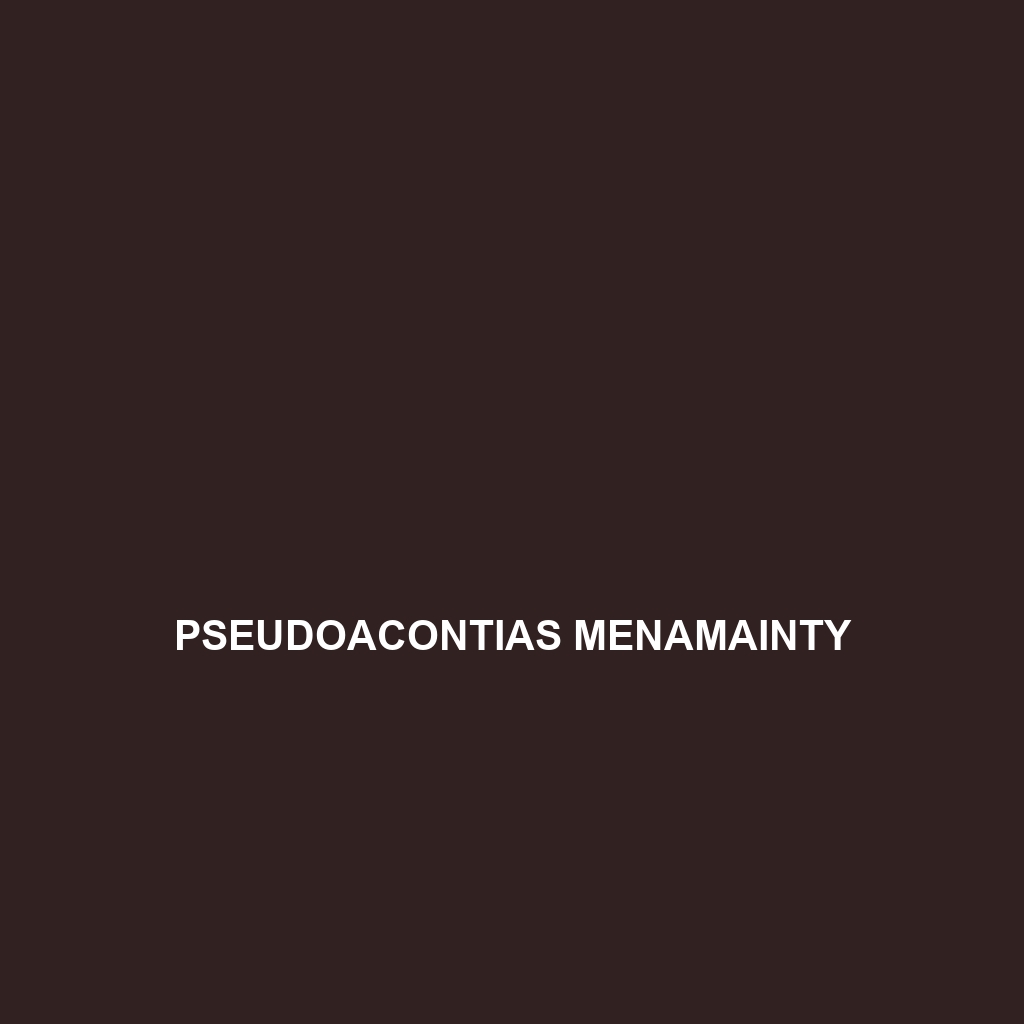<p><b>Pseudogekko atiorum</b>, a stunning gecko native to the rainforests of the Philippines, boasts a length of 10 to 12 inches with vibrant color variations that offer excellent camouflage. This nocturnal insectivore plays a vital role in its ecosystem, maintaining insect populations and contributing to nutrient cycling, while facing threats from habitat destruction and fragmentation.</p>
Tag: endemic species
Pseudocalotes larutensis
<span><b>Pseudocalotes larutensis</b>, or the Larut Hill lizard, is a vibrant, insectivorous reptile native to the montane rainforests of Malaysia, characterized by its distinct spiny dorsal crest and diurnal foraging behaviors. This vulnerable species plays a crucial role in regulating insect populations and contributes to the ecosystem's biodiversity.</span>
Pseudoacontias madagascariensis
<strong>Madagascar Legless Skink (Pseudoacontias madagascariensis)</strong>: This unique, nocturnal reptile, measuring 20-30 cm, thrives in Madagascar's diverse habitats, showcasing a serpentine body with smooth scales and a diet primarily consisting of ants and termites. Currently listed as vulnerable, it plays a crucial ecological role by regulating insect populations and contributing to soil aeration.
Pseudoacontias angelorum
<p><b>Pseudoacontias angelorum</b> is a slender, nocturnal species endemic to Madagascar, thriving in humid rainforests and savannas. With its dark brown or olive skin and unique burrowing behavior, this vulnerable insectivore plays a crucial role in maintaining ecosystem balance by controlling pest populations and aerating the soil.</p>
Proctoporus xestus
Discover the Proctoporus xestus, the Andean lizard, native to high-altitude regions of South America, characterized by its slender body, distinctive earth-tone coloration, and remarkable climbing abilities. Primarily insectivorous and exhibiting diurnal behaviors, this resilient species plays a crucial role in maintaining ecological balance within its Andean habitat.
Proablepharus tenuis
<p><b>Proablepharus tenuis</b>, known as the slender sphenomorphus, is a vibrant insectivorous lizard thriving in tropical rainforests with a length of 15 to 25 centimeters. With its unique coloration, large eyes, and agile tail, it plays a crucial role in its ecosystem by controlling insect populations while showcasing remarkable camouflage abilities.</p> </div>
Pristurus sokotranus
<p><b>Pristurus sokotranus</b>, known as the Sokotra Ground Gecko, is a small, insectivorous gecko native to the unique island of Socotra. Measuring 10 to 15 cm, it features a slender body and excellent camouflage, thrives in rocky terrains, and exhibits nocturnal behavior, playing a vital role in its habitat's ecological balance.</p>
Pygmaeascincus koshlandae
<p><b>Pygmaeascincus koshlandae</b> is a small, striking skink measuring 8 to 10 cm, known for its agile movements and exceptional camouflage in the tropical rainforests of Papua New Guinea. This insectivorous species plays a vital role in maintaining insect populations and serves as a crucial component of its ecosystem, yet is currently classified as Vulnerable due to habitat loss.</p>
Pseudoxyrhopus imerinae
<p><b>Pseudoxyrhopus imerinae</b>, a medium-sized snake native to the rainforests of Madagascar, features a slender body with brown and olive green coloration for effective camouflage. Primarily nocturnal, this species plays a crucial role in its ecosystem as both predator and prey, while currently facing threats from habitat destruction, resulting in its 'Vulnerable' conservation status.</p>
Pseudonaja guttata
<p><b>Pseudonaja guttata</b>, commonly known as the Spotted Brown Snake, is a slender, nocturnal snake found in southeastern Australia, characterized by its distinctive light to dark brown coloration with darker blotches, measuring 100 to 150 cm in length. This carnivorous reptile plays a vital ecosystem role by regulating small mammal populations and demonstrates fascinating behaviors such as ambush hunting and ritualized combat during the breeding season.</p>









